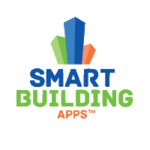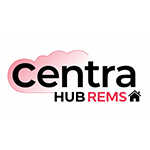Description

Smart Building Apps

4QT Real Estate ERP
Comprehensive Overview: Smart Building Apps vs 4QT Real Estate ERP
Smart Building Apps
a) Primary Functions and Target Markets
Smart Building Apps are designed to optimize the management and operation of buildings through technology integration. They typically offer functionalities like energy management, facility maintenance, access control, tenant communication, and data analytics. The target market includes building owners, facility managers, property managers, and tenants in commercial real estate, including office buildings, shopping centers, and multi-family residential properties.
b) Market Share and User Base
The smart building technology market has been growing steadily as more facilities integrate IoT solutions for efficiency and sustainability. While exact figures can vary, companies like Schneider Electric, Siemens, and IBM are significant players. The user base varies widely, from single-building owners to large real estate firms with extensive portfolios.
c) Key Differentiating Factors
- Integration Capabilities: Smart Building Apps differ in the range of devices and systems they can seamlessly integrate with, important for creating a cohesive building management ecosystem.
- Scalability: Some apps are better suited for small-scale operations, while others support large, complex facilities with vast datasets.
- User Interface: The ease of use can vary widely, impacting adoption rates among less tech-savvy users.
- Customization: Ability to tailor solutions to specific building needs—vital for unique real estate assets.
4QT Real Estate ERP
a) Primary Functions and Target Markets
4QT Real Estate ERP is an Enterprise Resource Planning system tailored for the real estate industry. Primary functions include property management, financial accounting, lease administration, asset management, and maintenance management. It targets real estate developers, property management firms, and commercial real estate organizations that require comprehensive management solutions.
b) Market Share and User Base
While less widely known than some major ERP providers like SAP and Oracle, 4QT Real Estate ERP is gaining traction in niche markets focused exclusively on real estate needs. Its user base primarily comprises mid-sized to large real estate firms seeking integrated software solutions.
c) Key Differentiating Factors
- Real Estate Specific Features: Unlike general ERPs, 4QT focuses specifically on real estate, offering tailored modules for the industry.
- Integration with Real Estate Data: Greater emphasis on integrating real estate-specific data (like market trends and property valuations).
- Comprehensive Suite: Offers end-to-end management capabilities, from financials to operations.
ProNest
a) Primary Functions and Target Markets
ProNest is a software solution primarily used for nesting and cutting operations in manufacturing. It provides advanced CAD/CAM part programming specifically for mechanized cutting processes such as plasma, laser, waterjet, and oxyfuel. ProNest is targeted at manufacturers looking to improve material efficiency, reduce scrap, and optimize cutting paths.
b) Market Share and User Base
ProNest serves a niche market in the manufacturing sector, especially where efficiency in material usage is a priority. The software is frequently employed by manufacturers in industries like metal fabrication, shipbuilding, and aerospace. While it does not dominate the broader manufacturing software market, it is highly regarded in its specific niche.
c) Key Differentiating Factors
- Specialization in Cutting Processes: ProNest's features are deeply specialized for materials cutting, setting it apart from more generalized manufacturing or CAD/CAM software.
- Optimization Algorithms: Its advanced nesting algorithms are designed to maximize material efficiency and minimize waste, a significant advantage in cost-sensitive manufacturing processes.
- Reporting and Analytics: ProNest offers tools for detailed reporting on efficiency and material usage, giving manufacturers insights into their operations for improvement.
Overall Comparison
These three products serve distinctly different markets and have unique functionalities. Smart Building Apps focus on building management and real estate efficiency through IoT, targeting property managers and owners. 4QT Real Estate ERP offers comprehensive, real estate-specific management solutions suited for large firms in the real estate sector. ProNest provides specialized software for optimizing industrial cutting processes in manufacturing.
- Market Share and User Base: ProNest and 4QT Real Estate ERP serve niche markets with dedicated followings, while Smart Building Apps contend with a broader IoT market that includes several major players, though each app might have its specific user base.
- Differentiating Factors: Smart Building Apps are differentiated by IoT integration and building-specific functionalities, 4QT Real Estate ERP stands out for its industry-specific comprehensive ERP solutions, and ProNest excels in its specialization and optimization for cutting processes in manufacturing.
Each is chosen based on the specific needs of their respective industries, with decisions often contingent on the scale of operations, specific functionalities required, and level of industry specialization.
Contact Info

Year founded :
2008
Not Available
Not Available
Canada
Not Available

Year founded :
Not Available
Not Available
Not Available
Not Available
Not Available
Feature Similarity Breakdown: Smart Building Apps, 4QT Real Estate ERP
To provide a feature similarity breakdown for Smart Building Apps, 4QT Real Estate ERP, and ProNest, we need to focus on the core functions they offer and how they present these functions to the user. Each of these platforms serves somewhat different markets but may share some overlapping capabilities.
a) Core Features in Common
-
Data Management and Analytics:
- All three platforms likely include features for data management and analytics. Smart building apps, for instance, can collect data from various building systems, while ERP systems like 4QT focus on financial and operational data. ProNest may offer analytics tied to manufacturing and inventory data.
-
Reporting:
- Each tool likely offers comprehensive reporting features. Smart Building Apps can generate reports about energy usage, 4QT Real Estate ERP for real estate performance and financials, and ProNest for manufacturing efficiency and inventory levels.
-
Integration Capabilities:
- These platforms support integrations with other systems (e.g., accounting software, HVAC systems, or CAD software). This connectivity is crucial for ensuring seamless operations across different business units or building systems.
-
User Role Management:
- All products support user role management, allowing different levels of access and permissions, which is crucial for data security and operational efficiency.
b) User Interface Comparison
-
Smart Building Apps:
- Typically designed for intuitive use with graphical representations of building structures. The interface might focus on dashboards with real-time data visualization, often optimized for tablets or other mobile devices used by facility managers.
-
4QT Real Estate ERP:
- Generally, it will have a more structured, business-oriented interface that is dense with data tables, graphs, and options for detailed financial information and property management tasks. Likely more suited for desktop use.
-
ProNest:
- As a solution related to manufacturing, its interface might focus on efficiency and precision, presenting data related to inventory, production scheduling, and machine programming in a clear and concise manner. Visual dashboard elements might include schematics or tooling configurations.
c) Unique Features
-
Smart Building Apps:
- Unique features often include energy management and optimization functionalities, IoT connectivity for real-time sensor data management, and enhanced security features such as surveillance integration.
-
4QT Real Estate ERP:
- One distinguishing feature might be its real estate-specific modules, such as lease management, tenant billing, and maintenance scheduling, which are tailored specifically for property managers and real estate businesses.
-
ProNest:
- Known for its focus on nesting software for optimizing cutting routes and patterns to minimize waste in materials like metal and wood, along with CNC machine integration, which are likely not found in the other two products.
Each of these platforms serves specialized needs but shares common software features related to data handling while maintaining distinct capabilities and user interfaces designed for their specific market requirements.
Features

Facility Management
Occupant Comfort
Energy Management
Security & Access Control

Property Management
Financial Management
Maintenance Management
Reporting & Analytics
Best Fit Use Cases: Smart Building Apps, 4QT Real Estate ERP
Smart Building Apps, 4QT Real Estate ERP, and ProNest are solutions designed to cater to specific needs within the real estate, construction, and manufacturing industries. Each has its unique strengths and best-fit scenarios based on the business requirements they address.
a) Smart Building Apps
Use Cases:
- Commercial Real Estate Management: Ideal for property managers handling large commercial complexes. These apps provide tools for energy management, facility management, tenant engagement, and operational efficiency.
- Smart Cities Projects: They serve as foundational technology solutions, integrating IoT to manage urban infrastructure efficiently.
- Corporate Campuses: Companies with considerable real estate assets can use these apps for better management of their facilities, ensuring sustainability and cost-saving initiatives.
Industries:
- Used by real estate developers, facility managers, and urban planners.
- Suitable for medium to large enterprises focusing on operational efficiency and sustainability.
b) 4QT Real Estate ERP
Use Cases:
- Real Estate Development Firms: Perfect for businesses that require comprehensive management solutions for finance, operations, human resources, and customer relations in real estate projects.
- Property Management Companies: Ideal for organizations seeking integrated solutions to handle multiple aspects of property management seamlessly.
- Construction Management: Beneficial for firms needing project management capabilities tied with financial reporting for large-scale construction projects.
Industries:
- Tailored for real estate development companies, property managers, and construction firms.
- Fits medium to large-sized businesses that require a robust ERP solution to manage both internal and client-facing processes.
c) ProNest
Use Cases:
- Manufacturing Enterprises: Best suited for companies involved in the fabrication of metal parts where nesting and cutting operations are core. It helps optimize material usage and production efficiency.
- Sheet Metal Industries: Addresses businesses that need precise material nesting capabilities for their production lines, like automotive and aerospace suppliers.
- Job Shops: Small to medium-sized businesses that handle custom, short-run jobs benefit from ProNest’s flexibility and efficiency in handling varied projects.
Industries:
- Focused on manufacturing sectors, particularly those dealing with metal cutting and fabrication.
- Applicable mainly to medium-sized businesses but can also cater to larger enterprises with complex, diverse production requirements.
d) Catering to Industry Verticals and Company Sizes
- Smart Building Apps typically cater to real estate and urban development sectors aiming for enhanced operational efficiency and sustainability, suitable for medium to large companies.
- 4QT Real Estate ERP serves the real estate and construction sectors needing comprehensive ERP solutions to manage large and complex portfolios, fitting for medium to large enterprises.
- ProNest is specific to the manufacturing sector, especially related to the metalworking industry, offering scalability from medium-sized businesses to large enterprises seeking efficiency in production operations.
Each product targets different aspects of their respective industries, allowing companies to choose solutions based on their immediate operational needs, strategic goals, and business sizes.
Pricing

Pricing Not Available

Pricing Not Available
Metrics History
Metrics History
Comparing undefined across companies
Conclusion & Final Verdict: Smart Building Apps vs 4QT Real Estate ERP
To provide a well-rounded conclusion and final verdict on Smart Building Apps, 4QT Real Estate ERP, and ProNest, let's break down the evaluation based on value, pros and cons of each product, and recommendations for potential users.
Conclusion and Final Verdict
a) Best Overall Value
Considering all factors such as functionality, cost-effectiveness, user experience, scalability, and customer support, Smart Building Apps offer the best overall value. This product is well-suited for businesses seeking integrated building management solutions that prioritize energy efficiency, tenant satisfaction, and operational optimization. Its strength lies in providing a comprehensive platform that balances advanced technology with user-friendly interfaces.
b) Pros and Cons
Smart Building Apps
- Pros:
- Comprehensive building management features.
- Highly scalable, capable of handling small to large portfolios.
- Strong focus on energy efficiency and sustainability.
- User-friendly interface with regular updates and support.
- Cons:
- May require significant initial setup and training.
- Costs can escalate with additional modules or features.
4QT Real Estate ERP
- Pros:
- Specifically tailored for real estate operations, providing robust financial and property management tools.
- Offers excellent reporting and data analysis capabilities.
- Integrates seamlessly with existing business systems and ERPs.
- Cons:
- Primarily focused on real estate management, limiting flexibility for broader building management needs.
- Can be complex for users unfamiliar with ERP systems, requiring more training.
ProNest
- Pros:
- Excellent for manufacturing settings with a focus on nesting and production efficiency.
- Supports reduction in material waste, ultimately improving cost efficiency.
- Provides integrations with various CNC machines and CAD software.
- Cons:
- Not specifically designed for building management or real estate, limiting its applicability in those areas.
- High software requirements and a steep learning curve for optimal use.
c) Recommendations for Users
-
For users in the real estate sector: 4QT Real Estate ERP is the recommended choice when the primary goal is to enhance financial and property management operations. Its robust reporting and strong integration capabilities with existing enterprise systems make it an optimal solution for real estate companies.
-
For users focusing on building management and sustainability: Smart Building Apps stands out for users who prioritize energy efficiency and comprehensive building management tools. Its scalability and user-friendly approach make it ideal for a wide range of properties.
-
For users in the manufacturing industry: ProNest is the clear choice for manufacturing environments where material optimization and integration with production systems are critical. Potential users should be prepared for its specific use case and learning requirements.
In conclusion, while Smart Building Apps generally offer the best value for those within the building management domain, the choice ultimately depends on the specific needs and industry focus of the user. Each product has distinct strengths that cater to particular niches, making it essential for users to consider their unique operational requirements and long-term goals when deciding between these solutions.
Add to compare
Add similar companies



